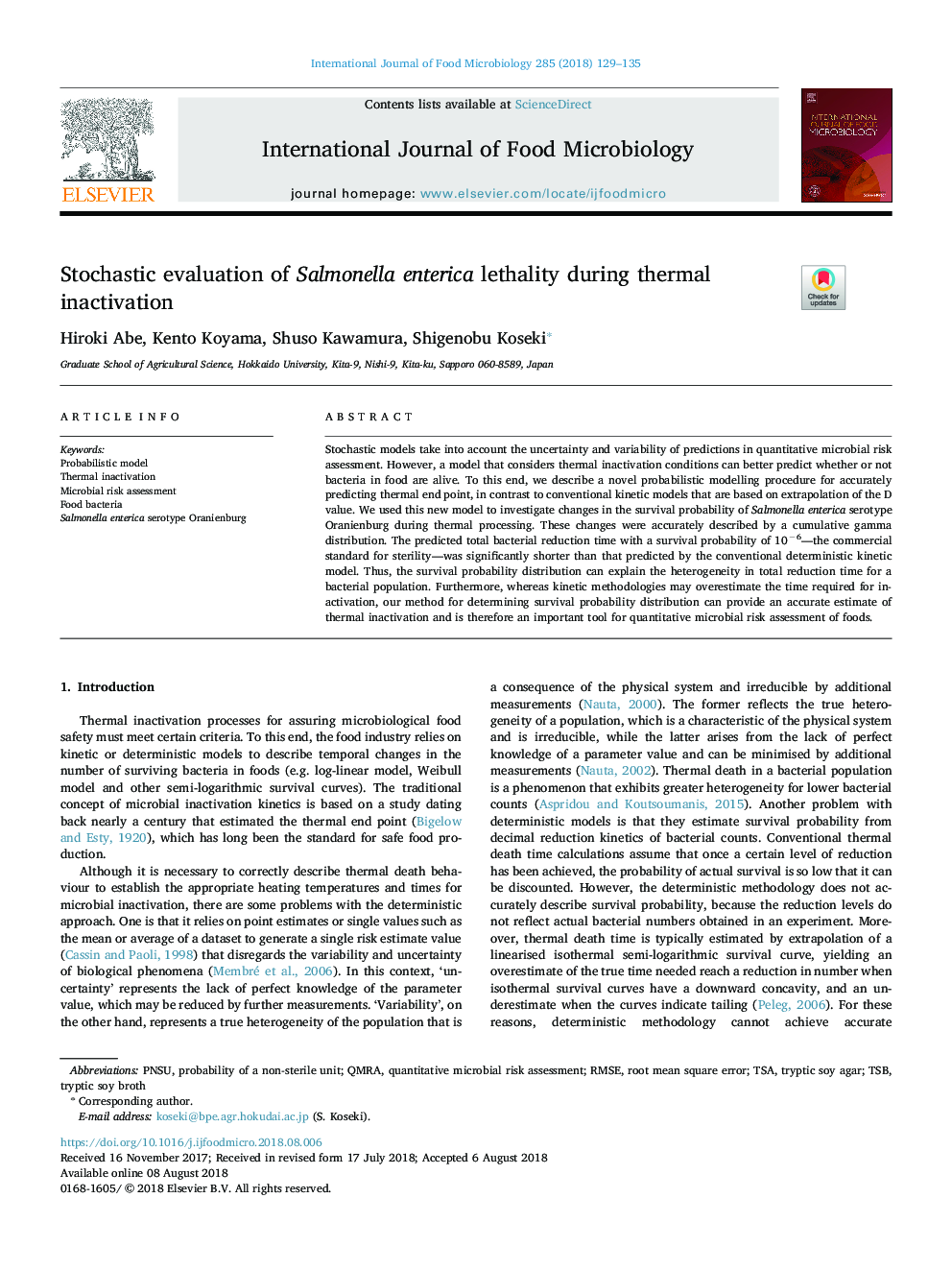| Article ID | Journal | Published Year | Pages | File Type |
|---|---|---|---|---|
| 8844075 | International Journal of Food Microbiology | 2018 | 7 Pages |
Abstract
Stochastic models take into account the uncertainty and variability of predictions in quantitative microbial risk assessment. However, a model that considers thermal inactivation conditions can better predict whether or not bacteria in food are alive. To this end, we describe a novel probabilistic modelling procedure for accurately predicting thermal end point, in contrast to conventional kinetic models that are based on extrapolation of the D value. We used this new model to investigate changes in the survival probability of Salmonella enterica serotype Oranienburg during thermal processing. These changes were accurately described by a cumulative gamma distribution. The predicted total bacterial reduction time with a survival probability of 10â6-the commercial standard for sterility-was significantly shorter than that predicted by the conventional deterministic kinetic model. Thus, the survival probability distribution can explain the heterogeneity in total reduction time for a bacterial population. Furthermore, whereas kinetic methodologies may overestimate the time required for inactivation, our method for determining survival probability distribution can provide an accurate estimate of thermal inactivation and is therefore an important tool for quantitative microbial risk assessment of foods.
Keywords
Related Topics
Life Sciences
Agricultural and Biological Sciences
Food Science
Authors
Hiroki Abe, Kento Koyama, Shuso Kawamura, Shigenobu Koseki,
